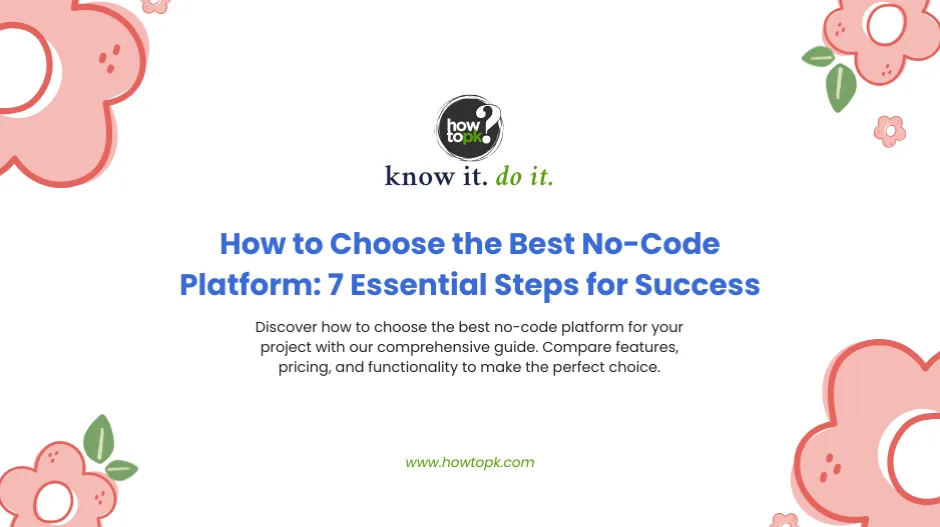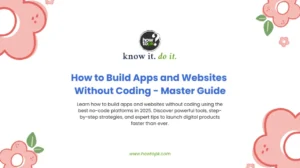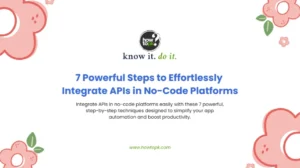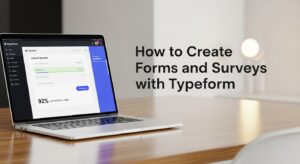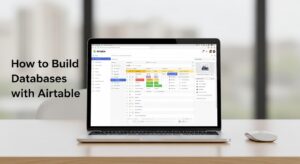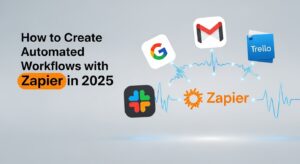Choosing the best no-code platform for your project can feel overwhelming with dozens of options available in today’s market. Whether you’re a startup founder, small business owner, or enterprise leader, selecting the right no-code development tool is crucial for your project’s success.
No-code platforms have revolutionized software development by enabling users to build applications, websites, and automation workflows without traditional programming knowledge. However, not all platforms are created equal, and the wrong choice could cost you time, money, and momentum.
Understanding No-Code Platforms: The Foundation
Before diving into how to choose the best no-code platform, it’s essential to understand what these tools offer. No-code platforms provide visual, drag-and-drop interfaces that allow users to create functional applications through intuitive design elements rather than complex coding.
These platforms typically include pre-built templates, database management capabilities, user authentication systems, and integration options with third-party services. The best no-code platform for your specific needs will depend on several key factors we’ll explore throughout this guide.
The Rise of No-Code Development
The no-code movement has gained significant traction as businesses seek faster, more cost-effective ways to digitize their operations. According to recent industry reports, the no-code development market is expected to reach $65 billion by 2027, highlighting the growing demand for these solutions.
Step 1: Define Your Project Requirements
The first step in selecting the best no-code platform is clearly defining what you want to build. Different platforms excel in different areas, so understanding your specific requirements is crucial.
Project Types to Consider
- Web Applications: If you’re building a web-based application, platforms like Bubble or Webflow might be ideal choices.
- Mobile Apps: For mobile-first applications, consider platforms such as Adalo or Glide.
- Database Applications: For data-heavy projects, Airtable or Notion offer robust database management capabilities.
- E-commerce Solutions: Platforms like Shopify or Squarespace specialize in online stores.
Key Questions to Ask Yourself
- What is the primary purpose of your application?
- Who is your target audience?
- What devices will users primarily access your application from?
- Do you need complex database functionality?
- Will you require third-party integrations?
- What is your expected user volume?
Step 2: Evaluate Platform Capabilities and Features
Once you’ve defined your requirements, it’s time to assess which platforms offer the functionality you need. The best no-code platform should align closely with your project’s technical demands.
Essential Features Comparison
Feature | Bubble | Webflow | Airtable | Adalo | Glide |
Database Management | Excellent | Limited | Excellent | Good | Good |
Custom Logic | Excellent | Limited | Limited | Good | Limited |
Mobile Responsiveness | Good | Excellent | N/A | Excellent | Excellent |
Third-party Integrations | Excellent | Good | Excellent | Good | Good |
User Authentication | Excellent | Limited | Limited | Good | Good |
Scalability | Excellent | Good | Good | Limited | Limited |
Advanced Functionality Considerations
When evaluating the best no-code platform options, consider whether you need:
- Custom Workflows: Some platforms offer sophisticated workflow builders that can handle complex business logic without coding.
- API Integrations: The ability to connect with external services through APIs is crucial for most modern applications.
- Real-time Updates: If your application requires real-time data synchronization, ensure your chosen platform supports this functionality.
- Multi-user Collaboration: For team projects, collaborative features and permission management become essential.
Step 3: Assess Scalability and Performance
Choosing the best no-code platform requires thinking beyond your immediate needs. Consider how your application might grow and evolve over time.
Traffic and User Considerations
Different platforms handle scaling differently. While some excel with small to medium-sized applications, others can support enterprise-level traffic and user bases.
- Startup Phase: Most no-code platforms can handle early-stage applications with limited users and traffic.
- Growth Phase: As your user base expands, performance and reliability become critical factors.
- Enterprise Scale: Only certain platforms can handle thousands of concurrent users and complex data operations.
Performance Metrics to Monitor
- Page load times
- Database query speed
- Concurrent user capacity
- Uptime reliability
- Mobile performance optimization
Step 4: Compare Pricing Models and Total Cost of Ownership
Understanding the true cost of your chosen platform is crucial for making an informed decision. The best no-code platform should offer transparent pricing that aligns with your budget and growth projections.
Common Pricing Structures
- Freemium Models: Many platforms offer free tiers with limited features, perfect for testing and prototyping.
- Subscription Tiers: Most platforms use monthly or annual subscription models with different feature sets at each level.
- Usage-Based Pricing: Some platforms charge based on the number of users, records, or API calls.
- Enterprise Pricing: Large organizations often require custom pricing for advanced features and support.
Hidden Costs to Consider
- Custom domain setup fees
- Additional storage costs
- Third-party integration expenses
- Premium support charges
- Migration costs if you need to switch platforms
Step 5: Evaluate Learning Curve and Documentation
The best no-code platform should be accessible to your team’s current skill level while offering room for growth. Consider the learning curve and available resources.
Platform Complexity Levels
- Beginner-Friendly: Platforms like Glide or Notion offer intuitive interfaces with minimal learning curves.
- Intermediate: Tools like Webflow or Airtable provide more functionality but require some technical understanding.
- Advanced: Platforms like Bubble offer extensive capabilities but may require significant time investment to master.
Learning Resources Assessment
Quality documentation, tutorials, and community support can significantly impact your success with any platform. Look for:
- Comprehensive documentation
- Video tutorials and courses
- Active community forums
- Regular webinars and training sessions
- Responsive customer support
Step 6: Test Integration Capabilities
Modern applications rarely operate in isolation. The best no-code platform should seamlessly integrate with your existing tools and services.
Essential Integration Categories
- Payment Processing: Stripe, PayPal, Square integration capabilities.
- Communication Tools: Email marketing, SMS, push notifications.
- Analytics: Google Analytics, Mixpanel, custom tracking solutions.
- CRM Systems: Salesforce, HubSpot, Pipedrive connectivity.
- Cloud Storage: Google Drive, Dropbox, AWS S3 integration.
API and Webhook Support
Advanced integration capabilities often require API access and webhook support. Ensure your chosen platform provides:
- RESTful API access
- Webhook functionality
- Custom integration options
- Rate limiting transparency
Step 7: Consider Long-term Vendor Lock-in
One crucial factor often overlooked when selecting the best no-code platform is the potential for vendor lock-in. Understanding your exit strategy is essential for long-term project success.
Data Portability
Can you export your data in standard formats if you need to migrate? Look for platforms that offer:
- CSV/JSON data exports
- Database backup options
- Custom field preservation
- User data migration tools
Code Generation and Export
Some advanced platforms offer code generation features, allowing you to export your application as traditional code if needed. This provides an exit strategy while maintaining your investment in the platform.
Popular No-Code Platforms: Detailed Analysis
Bubble: The Power User’s Choice
Bubble stands out as one of the most powerful no-code platforms available. It’s particularly well-suited for complex web applications requiring custom logic and extensive database functionality.
Strengths:
- Highly customizable workflows
- Robust database management
- Strong API integration capabilities
- Active developer community
Considerations:
- Steeper learning curve
- Can become expensive at scale
- Mobile optimization requires extra effort
Webflow: Designer’s Paradise
Webflow excels in creating visually stunning, responsive websites with professional-grade design capabilities.
Strengths:
- Exceptional design flexibility
- Built-in SEO optimization
- Excellent mobile responsiveness
- Clean code generation
Considerations:
- Limited database functionality
- Not ideal for complex applications
- Requires design expertise for best results
Airtable: Database-First Approach
For projects centered around data management and organization, Airtable offers a spreadsheet-database hybrid that’s both powerful and user-friendly.
Strengths:
- Intuitive database design
- Excellent collaboration features
- Strong integration ecosystem
- Flexible data visualization
Considerations:
- Limited frontend customization
- Not suitable for public-facing applications
- Can become expensive with large datasets
Making Your Final Decision
Choosing the best no-code platform ultimately depends on your specific project requirements, team capabilities, and long-term goals. Consider creating a weighted scoring system based on the factors most important to your project.
Decision Framework
- Requirements Alignment (40%): How well does the platform meet your technical needs?
- Ease of Use (20%): Can your team effectively use the platform?
- Scalability (15%): Will the platform grow with your project?
- Cost Effectiveness (15%): Does the pricing model fit your budget?
- Integration Capabilities (10%): Can it connect with your existing tools?
Testing and Prototyping
Before making a final commitment, take advantage of free trials and create simple prototypes on your top platform choices. This hands-on experience often reveals insights that theoretical comparisons cannot provide.
Conclusion: Your Path to No-Code Success
Selecting the best no-code platform is a critical decision that will impact your project’s success for months or years to come. By following this comprehensive seven-step process, you’ll be well-equipped to make an informed choice that aligns with your specific needs and goals.
Remember that the “best” platform is highly contextual. What works perfectly for a simple business website might be inadequate for a complex SaaS application. Take the time to thoroughly evaluate your options, test promising platforms, and consider both your immediate needs and long-term vision.
The no-code revolution has democratized software development, making it possible for anyone with a great idea to bring it to life. With the right platform choice and proper planning, you’ll be well on your way to building successful applications without writing a single line of code.
Whether you choose Bubble for its power, Webflow for its design capabilities, or any other platform that meets your needs, the key is to start building and iterating. The best no-code platform is ultimately the one that empowers you to create, launch, and scale your vision effectively.

